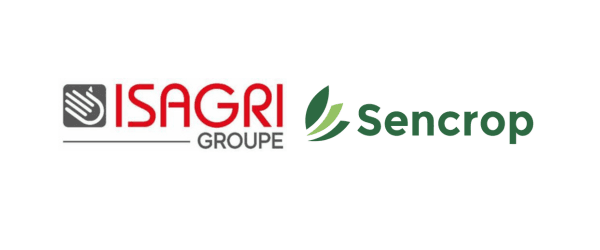Airbus/Cesbio cherche un post-doctorat en télédétection et modélisation de la production végétale
février 10, 2020Hackaton plant phenotyping with minicomputers and low-cost cameras
février 10, 2020INNOVATIONS EN GESTION DE LA TRANSITION ET DES RISQUES CLIMATIQUES : DU DIRE AU FAIRE -UQAM, 4/11/2019
FR : Diplômée de Montpellier Supagro (spécialisation en AgroTIC) en Novembre 2019, je mène un projet sur l’usage de nouvelles technologies pour l’agriculture dans les pays en développement. Première étape: découvrir le point de vue universitaire sur le sujet, en Amérique du nord.
ENG: After a master’s degree in new technologies applied to agriculture and agronomy, I am traveling the world to study the use of new technologies for agriculture in developing countries. This is a personal and autonomous project, and I decided to first get the academic perspective on my topic, in North American universities. Since this article relates my Quebec adventure, the English version comes below the French one!
Après mon aventure dans les laboratoires du MIT, voici mes quelques pas dans la communauté universitaire franco-québécoise!
Par un hasard heureux, j’ai pu participer à la première demi journée des 32e entretiens Jacques Cartier, événement en accès libre organisé conjointement par les universités francophones montréalaises et les universités lyonnaises. Ce séminaire annuel cherche à perpétuer l’amitié franco québécoise et échanger sur des thématiques communes très diverses (santé et sciences de la vie; mobilité, territoires et smart cities; numérique et technologie, etc.). Le séminaire sur les innovations en gestion de la transition et des risques climatiques était plus particulièrement supporté par l’institut de gestion de l’Université du Québec A Montréal (UQAM).
J’ai donc assisté à la première table ronde des deux jours de conférence, sur le thème “méthodes de diagnostic innovantes et nouveaux outils pour l’action en gestion des risques climatiques”.
Président et modérateur : Valérie Lehmann, UQAM
Participants : Mélissa Généreux, Université de Sherbrooke ; Rudy Hamel, Ville de Trois Rivières ; Bernard Thumerel, E2L Sensagri; Luc Bousquet, ENSA Lyon, Cerema.
L’objectif était de confronter sur ce thème des experts de différents milieux: architecture, santé et gestion des syndromes post traumatiques, cartographie et météorologie. Les exemples vécus au Québec concernent principalement l’effondrement des toits sous le poids de la neige et les inondations. Mme Généreux (Université de Sherbrook) a exposé le travail de reconstruction post traumatique dans les populations victimes de ces accidents. M. Bousquet (ENSAL) et M. Thumerel ( E2L Sensagri) ont illustré la partie française avec la réhabilitation de sites comme Sivens et le rôle de projets étudiants dans les ouvrages de réhabilitations. M Bousquet a travaillé plusieurs années consécutives sur la reconstruction de Lac-Mégantic, un commune québécoise ravagée par le déraillement et l’incendie d’un train transportant 6 millions de litres de pétrole brut, en 2013.
Eléments clés de la discussion :
Avec le vieillissement des populations il devient d’autant plus important de passer d’une gestion de crise à une gestion de risque (au Canada).
En outre les communautés prises en charge rapidement sur le plan émotionnel sont plus aptes à bien se reconstruire et aller de l’avant. Il faut aussi être prêt à sonder sur le terrain, en porte à porte si nécessaire -en amont et aval d’une crise- pour connaître le besoin des personnes impactées car les effets peuvent être très individualisés.
Sans préparation préalable, les communautés ont une plus forte probabilité de reconstruire leurs infrastructures à l’identique à l’issue d’une catastrophe, par réflexe de sécurité et par praticité. Cela peut toutefois être un mauvais investissement pour une ville (par exemple reconstruire des infrastructures de ski en moyenne montagne où la neige se raréfie avec le réchauffement climatique).
Il faudrait donc impliquer en avance les populations locales dans la planification des évolutions de leur commune. Cela peut consister en la création d’un “futurarium” où chacun dépose des idées; l’organisation de consultations publiques..
Les institutions publiques pourraient gagner en efficacité et attractivité en adoptant une approche de recherche et développement, plus participative. Réduire les réunions au profits d’événements mixtes, festifs et constructifs et encourager la consultation.
Une gestion éclairée de la transition et des crises climatiques semble relever souvent d’une bonne entente sociale plus que de l’établissement de nouveaux espaces de discussion (chose aisée à l’ère du numérique). En effet chaque groupe social ou professionnel véhicule des idées préconçues sur d’autres groupes, qui nuisent à la gestion en commun d’un projet. Ces idées préconçues (« les politiciens sont tous… », « les ingénieurs sont… » ) ont pour effet de diminuer l’efficacité et l’énergie de la communauté. Pour lutter contre cela M. Bousquet demande qu’au cours d’une mission ses étudiants résident chez les habitants de la communauté pour laquelle ils mènent un projet. Cela permet de diffuser de l’information et créer du lien social entre les parties prenantes. En rencontrant dans leur quotidien des personnes appartenant à différents groupes socio-professionnels, les étudiants gagnent en compréhension des enjeux et besoins locaux. Une gestion de projet qui rejoint celle que j’ai pu découvrir au MIT D-Lab!
ENGLISH VERSION
After exploring MIT D-Lab, here are my few steps within the French and Quebecois scholar community. I participated in the first day of the 32nd Jacques Cartier talks, an open event co-organized by universities of Québec province and the city of Lyon (France).This yearly gathering aims at pursuing good relationships and exchange on diverse topics (health and life sciences, mobility territories and smart cities, digital and technology, etc.). The talks on innovation for the management of climate transition and risks were more specifically supported by the management school of Université du Québec A Montréal (UQAM).
I signed up for the first round table of the two day talks named “ innovative diagnosis methods and new tools for managing climate change related risks”.
President and facilitator : Valérie Lehmann, UQAM
Participants : Mélissa Généreux, Université de Sherbrooke ; Rudy Hamel, Ville de Trois Rivières ; Bernard Thumerel, E2L Sensagri; Luc Bousquet, ENSA Lyon, Cerema
This panel’s aim was to confront experts on this common theme from different fields : an architect, a health and post traumatic syndrome expert, a mapping counselor and a meteorologist. The examples Quebec usually deals with involve mainly collapsed roof because of snow and floods. Mrs. Généreux exposed the post traumatic reconstruction work among populations that went through such circumstances. Mr. Bousquet and Mr. Thumerel displayed the French rehabilitation work on sites such as Sivens and discussed the involvement of students in these projects. Mr. Bousquet especially worked for several years on rehabilitating Lac Mégantic, a township consumed by the derailment and fire of a train carrying six million liters of oil, in 2013.
Key notes :
Due to the aging of the population, moving from a crisis management to a risk management prospect becomes critical (in Canada).
Communities that are cared for quickly on an emotional level move on faster and recover better. For this type of reconstruction work people are required on site, surveying individual needs. These needs can vary a lot, and may require knocking on doors to evaluate. This work is best done as a prevention as well as after a catastrophe.
Without anticipation, communities are more likely to rebuild their infrastructures identically to what existed rather than create something new. It is a safety and practicality reflex, which can be a bad investment for a city (for instance reconstructing ski infrastructures in a mid mountain area where snow falls tend to diminish due to climate change).
It would be good to involve the local population in a design process, to design the evolution of their city. This could be shaped as a ‘futurarium” where each citizen can input/suggest/contribute ideas. Public consultations are also possible.
Public institutions could increase their efficiency and popularity if they adopted a Research and Development approach of their activity. Decreasing meetings and increasing combined events, festive and informing, as well as increasing public consultation sounds like a promising start.
A well thought transition and crisis management seems to unfold from a fluid social climate rather than through setting new debate spaces (which is easy in a digital era). Each social group carries prejudice against other ones (“politicians are..”, “engineers are..”) that dim the efficiency and energy of the community. To fight against this phenomenon M. Bousquet makes his students stay with people of the community who will be affected by the project they work on. This allows the spreading of information and creates social connection between the different social groups involved. Meeting the inhabitants belonging to various backgrounds and observing them in their daily life helps the students gain an understanding of the local stakes and needs. To an extent, this project management shares the view carried by MIT D-Lab!



